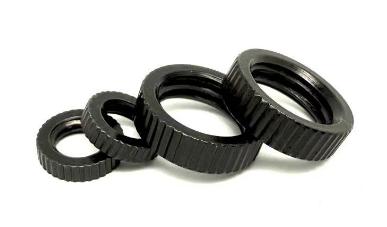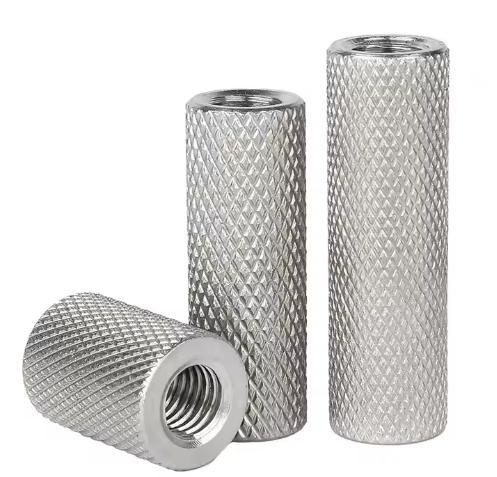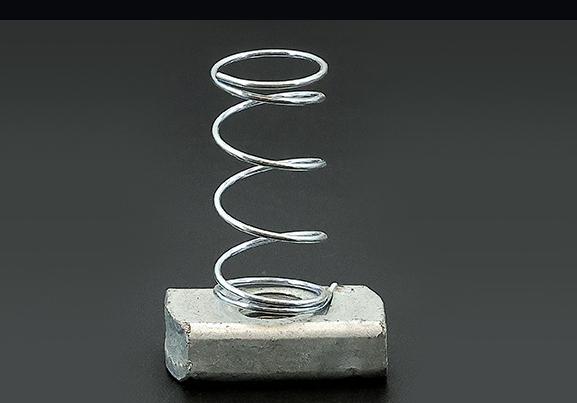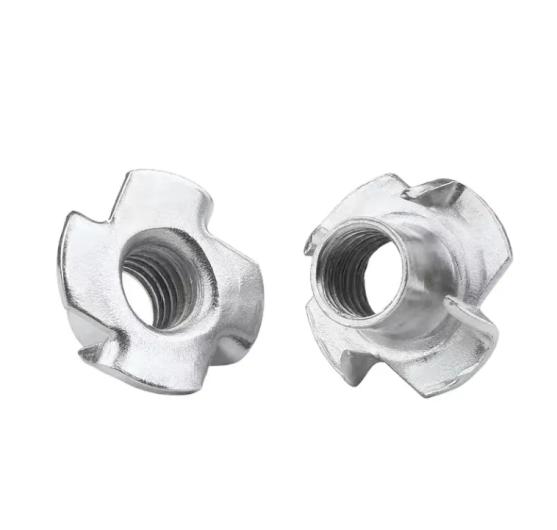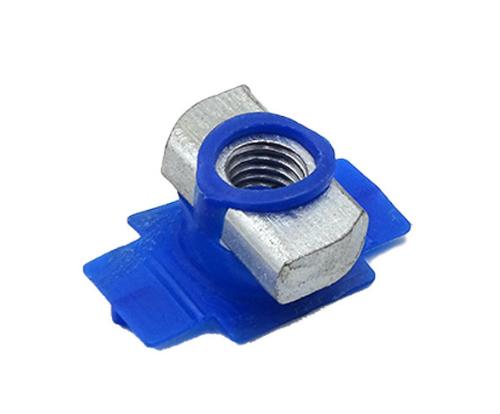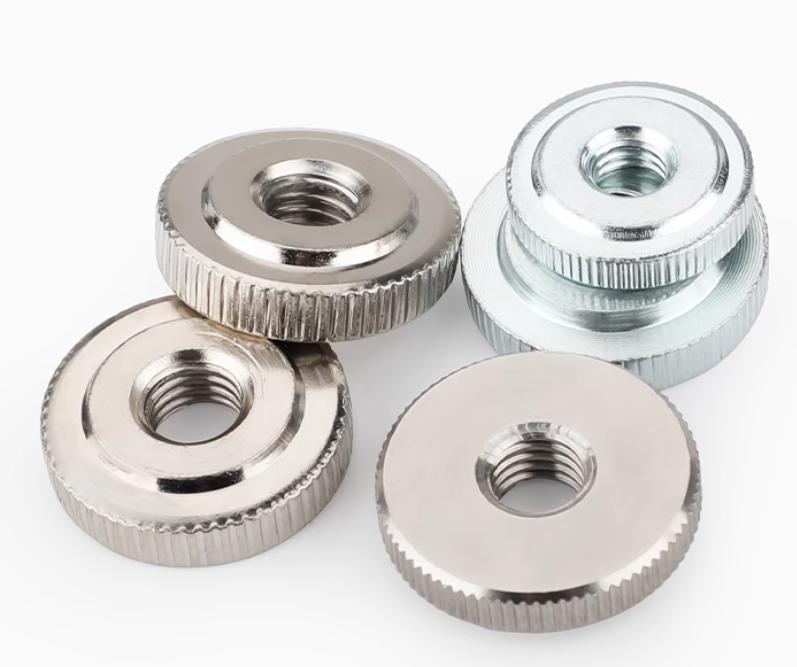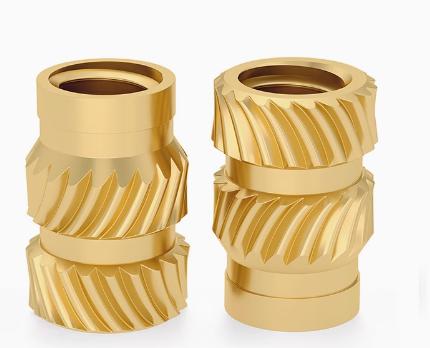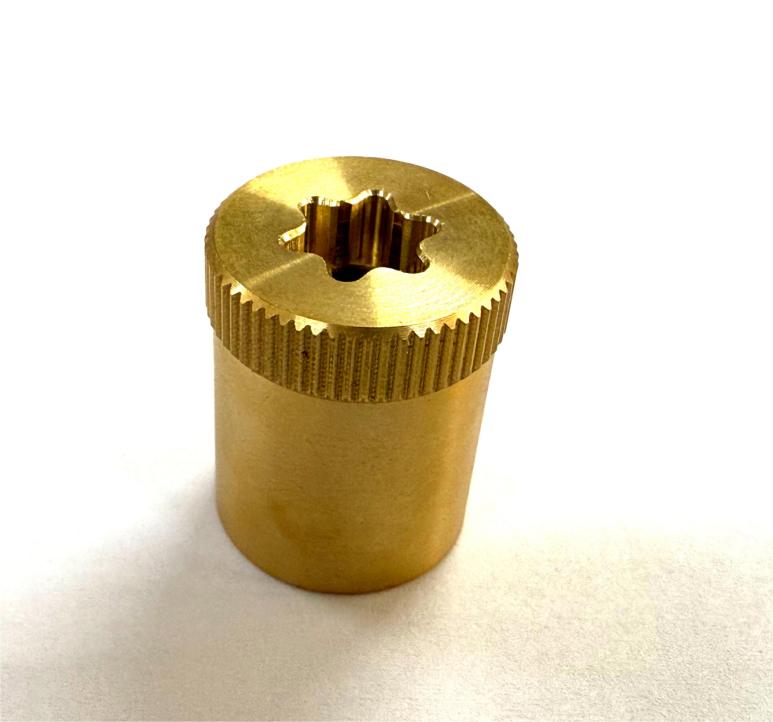What are the 10 Main Used Types of Nuts
When we mention nuts, you might immediately think of the edible variety, but in the realm of mechanics and engineering, nuts take on a different meaning. Nuts, commonly used in conjunction with screws, play a vital role in fastening components together. They are ubiquitous in our daily lives, and found in various applications across industries. However, with a multitude of nut types available, aside from the commonly used ones, there are several lesser-known nut varieties that even seasoned professionals might not be familiar with. In this article, we’ll explore ten main types of nuts found in the market, offering you a chance to discover the nuts you might not know about.
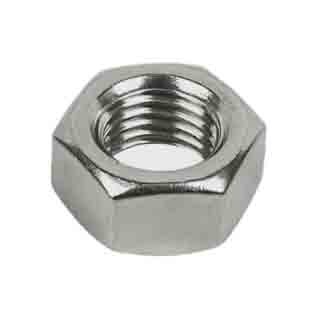
1. Hexagon Nuts
Hexagon nuts, also known as hex nuts, are nuts with a six-sided shape. They are primarily used in conjunction with bolts and screws to securely fasten components. Hexagon nuts come in various types based on their nominal thickness: Type I, Type II, and Thin types. Nuts with a grade of 8 and above are categorized into Type I and Type II, with Type I further divided into A, B, and C grades.
Applications
A and B grade hexagon nuts are suitable for machines, equipment, and structures with small surface roughness and high precision requirements. C grade hexagon nuts are used for machines, equipment, or structures with rougher surfaces and lower precision demands. Type II hexagon nuts, with their thicker dimensions, are commonly used in applications that require frequent assembly and disassembly.
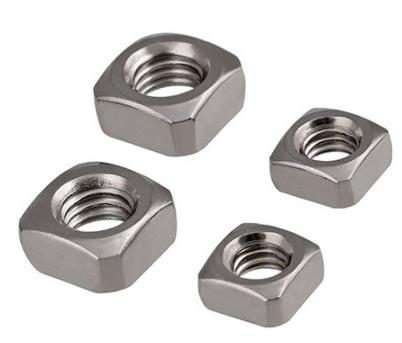
2. Square Nuts
As the name suggests, square nuts have a square shape. Also referred to as square or four-sided nuts, these nuts are used to fasten two products together by melting a certain type of metal at a high temperature to weld them in place.
Applications
Square nuts provide excellent fastening effects and are widely used in industries such as road transportation and home construction. Their applications cover nearly all industries requiring fastening components, making them one of the most common mechanical fasteners.
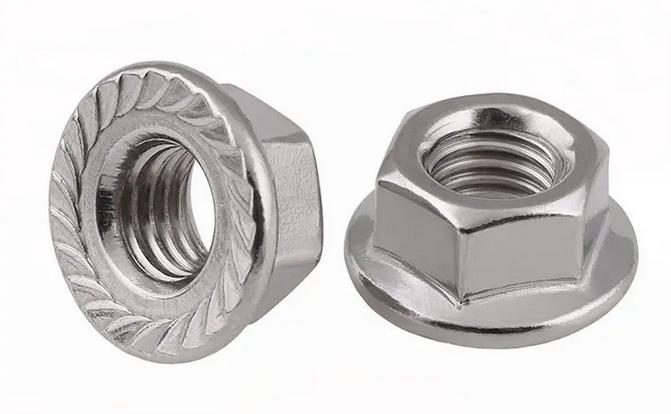
3. Flange Nuts
Flange nuts, also known as collar nuts, serrated flange nuts, or hexagon flange nuts, share the same dimensional specifications as hexagon nuts. The key difference lies in the integrated washer beneath the nut, featuring anti-slip serrations. This design increases the contact area between the nut and the workpiece, enhancing anti-loosening performance compared to a combination of regular nuts and washers.
Applications
Flange nuts are primarily used to connect two pipes or a pipe and an equipment piece. Their superior sealing performance makes them ideal for applications where strong seals are required, such as pipe connections or components exposed to rain and sunlight. These nuts are capable of withstanding high pressure and temperature, preventing leaks and loosening.
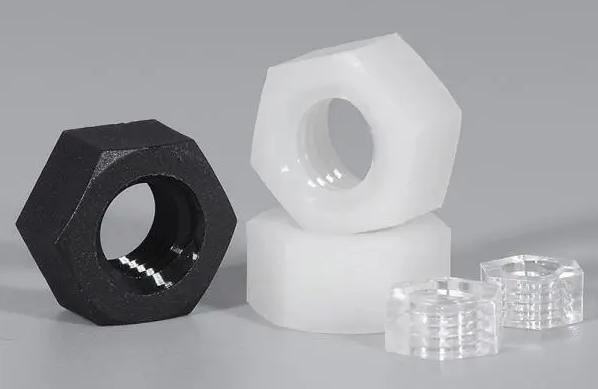
4. Nylon Nuts
Nylon nuts, also known as plastic nuts, are manufactured from nylon material. They possess excellent insulation, non-magnetic properties, heat resistance, lightweight, high strength, and corrosion resistance.
Applications
Nylon nuts find applications in various industrial sectors, particularly in the electroplating and communication industries. Nylon nuts are resistant to interference signals, making them suitable for communication applications. Their acid and alkali resistance also makes them usable in environments involving strong acids and bases, such as the electroplating industry.
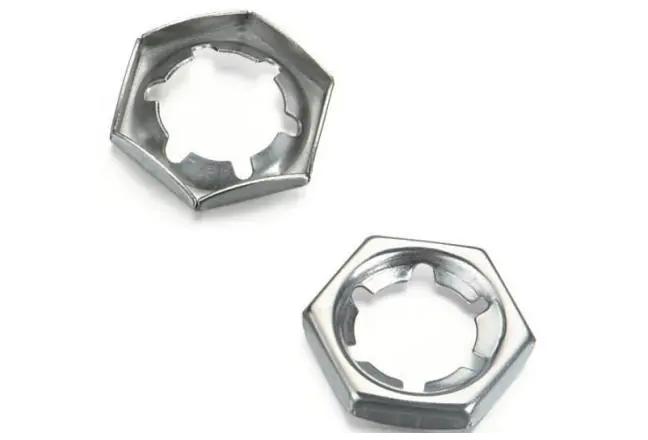
5. Lock Nuts
Lock nuts are a type of elastic lock nut frequently used as a secondary nut in double-nut locking structures. Weighing only about 5% of a regular nut, lock nuts are applied in aerospace fields and related contexts.
Applications
Lock nuts are not typically used as primary load-bearing fasteners. Their purpose is to back-tighten onto a nut to prevent it from loosening, effectively acting as a locking nut. To use them, you first secure the joint with a regular nut, then tighten the lock nut by hand, ensuring contact with the regular nut. Finally, use a wrench to turn the lock nut an additional 60° to 90°. When loosening, the regular hexagon nut must be tightened, creating a gap between the lock nut and the hexagon nut to release the lock.
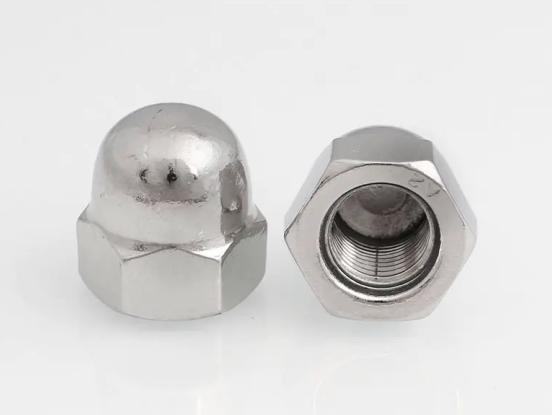
6. Cap Nuts
Cap nuts, as the name implies, are hexagon nuts with caps. These caps prevent exposure of the externally secured portion, guarding against the entry of water or corrosive substances. This, in turn, prevents rust, thereby enhancing the longevity of the nut itself and the connected components.
Applications
Cap nuts are used in similar applications to hexagon nuts. The cap design prevents the main nut from sliding and requires specialized tools like open-end wrenches, adjustable wrenches, combination wrenches, or special socket wrenches for tightening. They are widely used in applications where parts need to be frequently disassembled and maintained, such as in tire and axle connections in automobiles, tricycles, and electric vehicles, as well as in equipment exposed to outdoor elements.
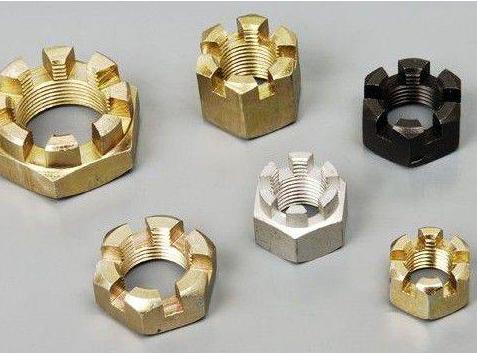
7. Slotted Nuts
Slotted nuts mainly refer to hexagon slotted nuts, which have grooves machined above the hexagon. These nuts are used in conjunction with bolts and screws featuring holes or pins to prevent relative rotation. Their function is to prevent bolts from rotating when subjected to external forces, as defined in standards such as GB6178-6181.
Applications
Slotted nuts are used to secure vehicle axles by fastening through front and rear wheel axle bolts, ensuring the chassis and tires are firmly attached. To prevent loosening, these nuts are secured using pins that pass through the slots in the nuts. Slotted nuts are also used to connect various mechanical components in machinery manufacturing, such as bearings, gears, and couplings.
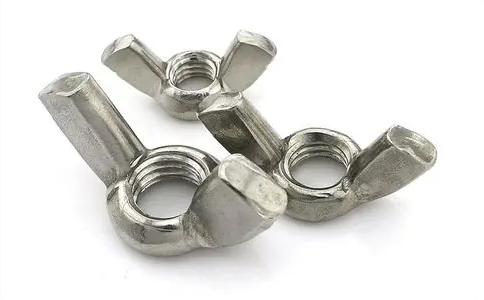
8. Wing Nuts
Wing nuts, with their unique butterfly-like shape, stand out with their curved head resembling a beautiful butterfly. These nuts not only have an appealing appearance but also serve functional purposes.
Depending on their manufacturing process, wing nuts can be divided into cold-formed wing nuts, cast wing nuts, and stamped wing nuts. In terms of shape, they can be categorized into square-wing and round-wing wing nuts.
Applications
Wing nuts are designed for easy hand-tightening, eliminating the need for additional tools. Their winged design increases the lateral surface area for force application, making hand-tightening more efficient. They are widely used in equipment requiring frequent disassembly and maintenance, such as medical devices, wind energy, aerospace, office equipment, petrochemicals, electronics, communications, and marine industries.
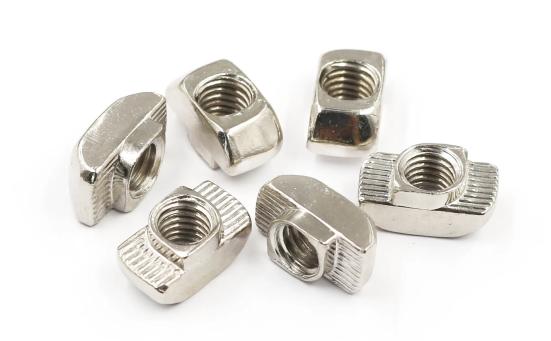
9. T-Nuts
T-nuts are nuts that resemble the letter “T,” designed to prevent components from loosening and rotating during installation. T-nuts also come in other shapes like rhombus and square. Nuts without threads are called waist bolts, which are advantageous for jointing under variable forces. High-strength bolts designed for steel structures feature larger heads and varying sizes.
Applications
T-nuts are widely used due to their convenience in installation and disassembly. They significantly improve labor productivity by enabling parts to be easily installed in various positions. This quality makes them suitable for T-grooves in various milling machines.
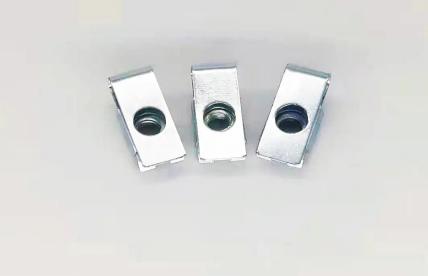
10. Spring Nuts
Spring nuts, composed of spring steel and standard components, possess self-locking functionality. They contribute to equipment stability and lifespan improvement.
Applications
Spring nuts excel in maintaining stability even under vibration, shock, and temperature changes. Their anti-loosening and vibration-resistant properties make them suitable for various equipment applications.
Conclusion
The variety of nut types available in the market cater to specific performance advantages and application scenarios. Therefore, when selecting nuts, it’s essential to consider specific requirements, usage scenarios, and performance demands to determine the most suitable nut type. Whether you’re working on a DIY project or a complex industrial application, having a clear understanding of these nut types can greatly contribute to the success of your endeavors.

